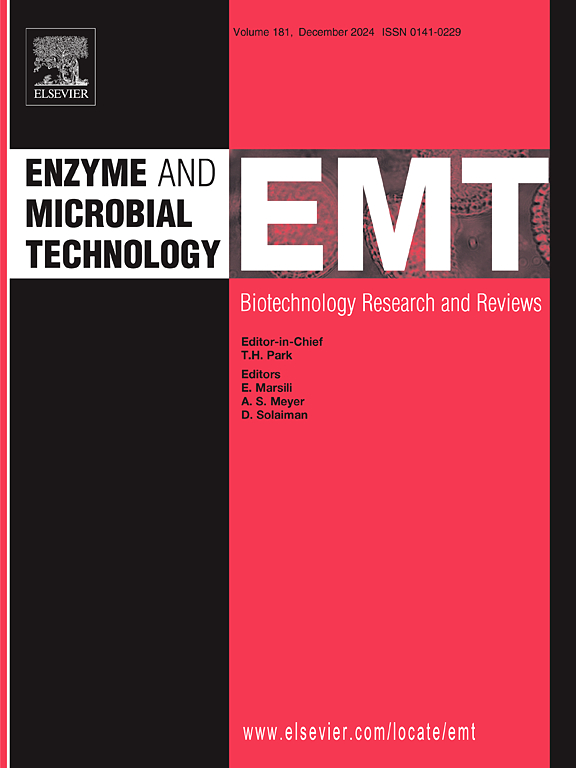NADPH regeneration for efficient biosynthesis of indigo by flavin-containing monooxygenase and formate dehydrogenase
IF 3.7
3区 生物学
Q2 BIOTECHNOLOGY & APPLIED MICROBIOLOGY
引用次数: 0
Abstract
Indigo is an important blue pigment widely used in textile, food, and medicine industries. Biological production of indigo attracts increasing attention recently. Cell factory production of indigo encounters the problem of the toxicity of the precursor indole. Enzymatic production is the alternative biological approach, however, NADPH regeneration should be solved. In this study, flavin-containing monooxygenase from Methylophaga aminisulfidivorans was used for enzymatic production of indigo from indole and formate dehydrogenase from Pseudomonas sp. 101 was co-expressed for NADPH regeneration. Indigo production was enhanced by combination of molecular modification, promoter engineering, and translation initiation region engineering. Finally, 0.183 g/L of indigo was produced from 0.5 g/L of indole and 0.5 mM of sodium formate, with the conversion ratio of 32.5 %. This study demonstrates a feasible and effective strategy for enzymatic production of indigo.
含黄素单加氧酶和甲酸脱氢酶对靛蓝高效生物合成的NADPH再生
靛蓝是一种重要的蓝色颜料,广泛用于纺织、食品、医药等行业。近年来,靛蓝的生物生产越来越受到人们的关注。细胞工厂生产靛蓝遇到的问题是前体吲哚的毒性。酶促生产是替代的生物途径,但NADPH再生应解决。本研究利用甲基噬菌(Methylophaga aminisulfidivorans)的含黄素单加氧酶从吲哚中产生靛蓝,并利用假单胞菌(Pseudomonas sp. 101)的甲酸脱氢酶进行NADPH再生。通过分子修饰、启动子工程和翻译起始区工程的结合,提高了靛蓝的产量。最后,以0.5 g/L吲哚和0.5 mM甲酸钠为原料,可制得0.183 g/L靛蓝,转化率为32.5 %。本研究证明了一种可行和有效的酶促生产靛蓝的策略。
本文章由计算机程序翻译,如有差异,请以英文原文为准。
求助全文
约1分钟内获得全文
求助全文
来源期刊

Enzyme and Microbial Technology
生物-生物工程与应用微生物
CiteScore
7.60
自引率
5.90%
发文量
142
审稿时长
38 days
期刊介绍:
Enzyme and Microbial Technology is an international, peer-reviewed journal publishing original research and reviews, of biotechnological significance and novelty, on basic and applied aspects of the science and technology of processes involving the use of enzymes, micro-organisms, animal cells and plant cells.
We especially encourage submissions on:
Biocatalysis and the use of Directed Evolution in Synthetic Biology and Biotechnology
Biotechnological Production of New Bioactive Molecules, Biomaterials, Biopharmaceuticals, and Biofuels
New Imaging Techniques and Biosensors, especially as applicable to Healthcare and Systems Biology
New Biotechnological Approaches in Genomics, Proteomics and Metabolomics
Metabolic Engineering, Biomolecular Engineering and Nanobiotechnology
Manuscripts which report isolation, purification, immobilization or utilization of organisms or enzymes which are already well-described in the literature are not suitable for publication in EMT, unless their primary purpose is to report significant new findings or approaches which are of broad biotechnological importance. Similarly, manuscripts which report optimization studies on well-established processes are inappropriate. EMT does not accept papers dealing with mathematical modeling unless they report significant, new experimental data.
 求助内容:
求助内容: 应助结果提醒方式:
应助结果提醒方式:


